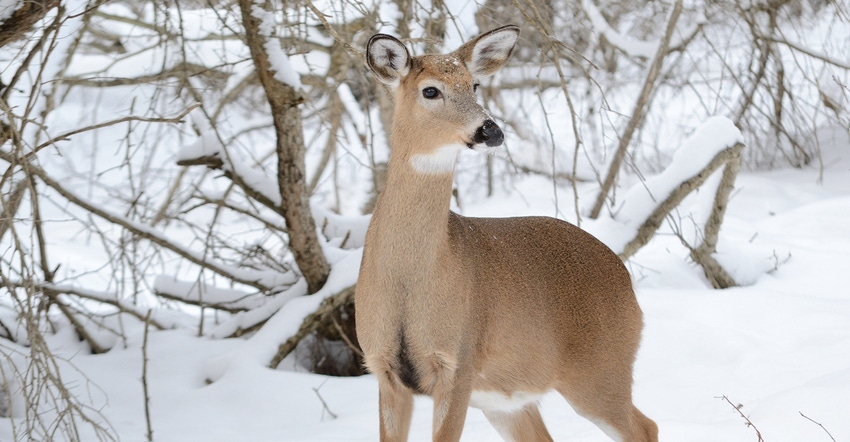January 6, 2020

The Minnesota Department of Natural Resources recently issued an emergency rule that temporarily prohibits the movement of all farmed white-tailed deer within the state.
The rule, which went into effect Dec. 23, is a temporary emergency action to reduce further spread of chronic wasting disease and protect Minnesota’s wild deer. The action is in response to the recent discovery of CWD in a farmed white-tailed deer in Douglas County in western Minnesota.
The emergency rule is in effect for 30 days.
The Minnesota Board of Animal Health in early December confirmed an 8-year-old white-tailed doe tested positive for the fatal deer disease in a small, two-deer hobbyist herd.
The new discovery in Douglas County has connections to other Minnesota deer farms and the state needs time to investigate locations that either provided deer to, or received deer from, the hobby farm.
DNR commissioner Sarah Strommen said the agency is committed to proactively addressing CWD and doing everything possible to protect Minnesota’s deer herd.
“The Douglas County positive, with its connections to other farms in the state, poses a risk to wild deer that requires emergency action,” she said. “We don’t take this action lightly.”
The temporary prohibition on all movement of farmed white-tailed deer in Minnesota would help control and contain the current spread of CWD, while allowing the state time to evaluate the outbreak, generate potential solutions to containing and eliminating the disease, and protect the wild deer herd.
The DNR is working closely with BAH on investigating the Douglas County discovery and tracing the farm’s connections to other locations in the state.
The DNR is already monitoring for CWD in disease management zones in southeastern and north-central Minnesota where the disease has been detected in both captive and wild deer, as well as in a CWD surveillance area in central Minnesota where it has been found in captive deer.
Prions, the infectious agent causing the disease, are found in urine, saliva, blood, feces, muscle and antler velvet of infected deer. Disease transmission can occur via direct animal-to-animal contact.
Since CWD was first detected in Minnesota in 2002, the DNR has tested more than 90,000 wild deer in the state. To date, 73 wild deer have been confirmed positive for CWD in Minnesota. Test results, including locations of confirmed positive test results and statistics, are available on the DNR website.
Source: DNR, which is solely responsible for the information provided and is wholly owned by the source. Informa Business Media and all its subsidiaries are not responsible for any of the content contained in this information asset.
You May Also Like




